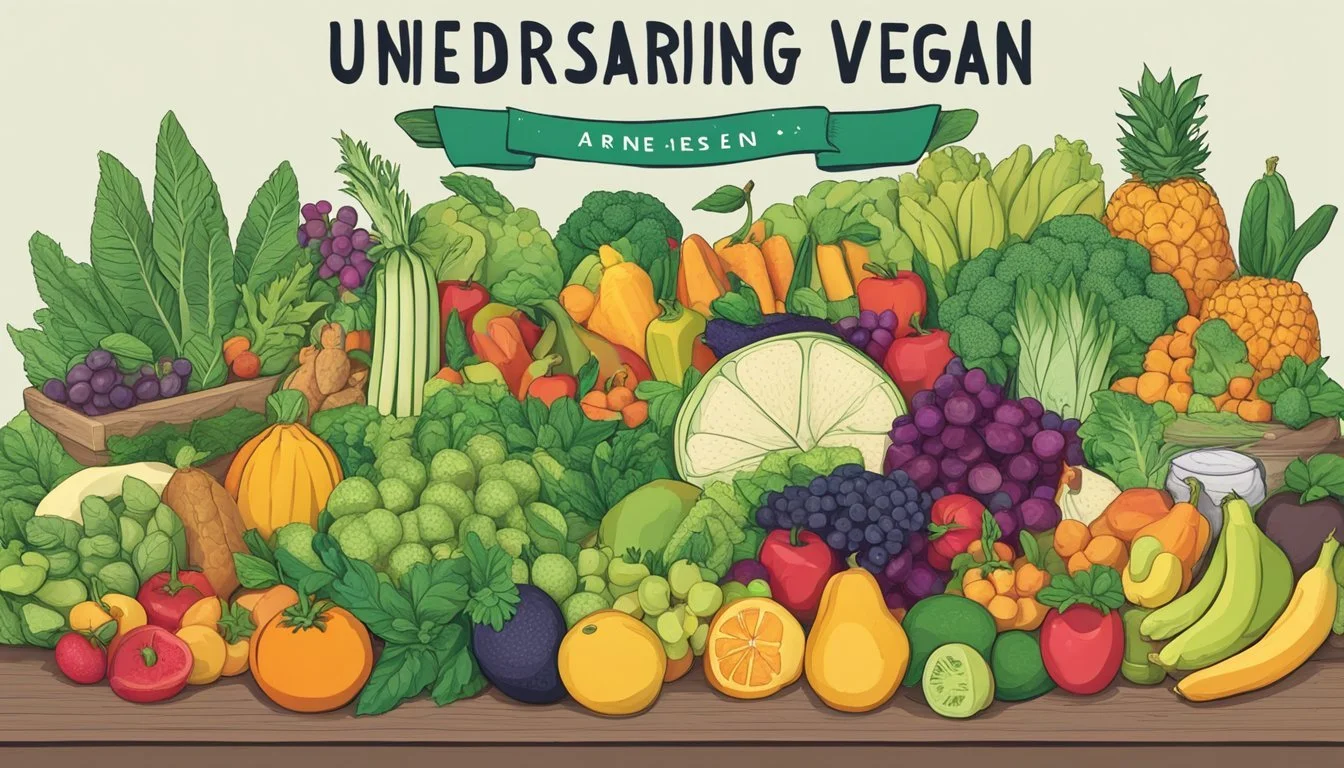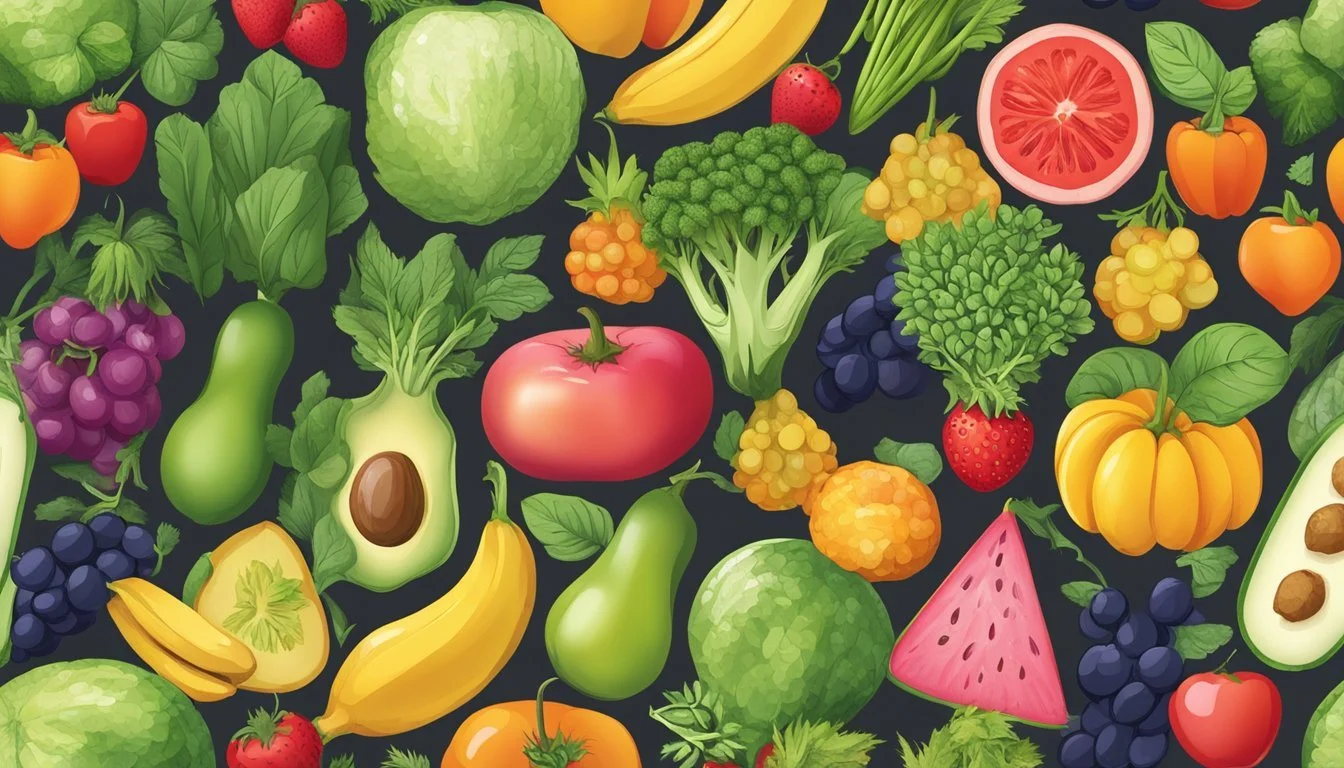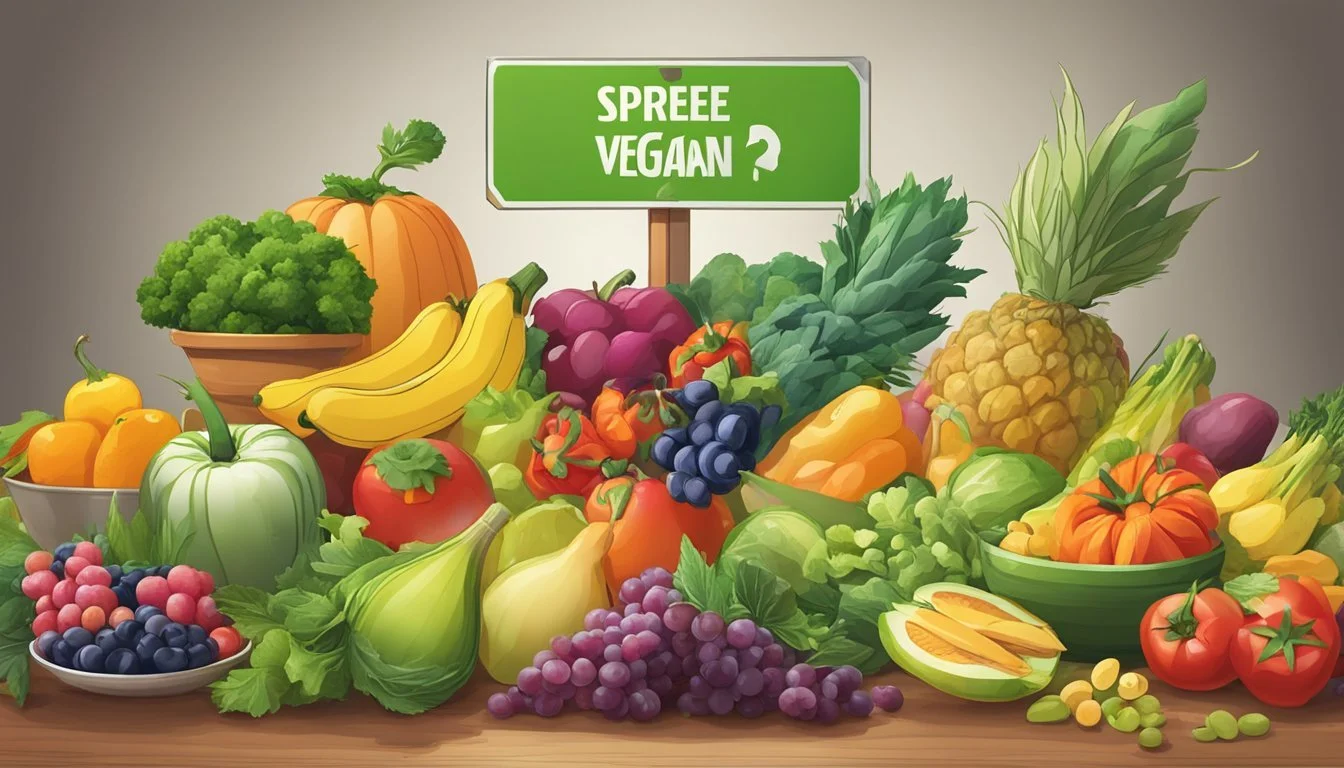Are Spree Vegan?
Unwrapping the Truth About These Candies
When considering whether Spree candies align with a vegan diet, it's important to assess the ingredients and manufacturing processes involved. Vegan consumers avoid animal products for ethical, environmental, or health reasons, which extends to the food they consume, including candies. While some sweets are inadvertently vegan, others may use animal-derived products or be subjected to animal testing.
Spree candies, originally created in the 1960s, are known for their vibrant colors and fruit flavors. However, scrutiny of their ingredients list reveals that they contain animal-derived products. Specifically, the use of egg in the candy's wash—applied to give the sweets their sheen—disqualifies Spree from being classified as vegan. Additionally, there is the risk of cross-contamination with other non-vegan items during production, an important consideration for consumers adhering strictly to vegan standards.
Understanding Veganism
In this section, we examine the essential aspects of veganism, breaking down its definition and the guiding principles behind the vegan diet.
Definition of Vegan
Veganism is both a diet and a lifestyle choice characterized by abstaining from the use of animal products. Ethical vegans avoid all forms of exploitation and cruelty to animals for food, clothing, or any other purpose, whereas dietary vegans focus primarily on eliminating animal products from their diets.
Ethical veganism: A comprehensive lifestyle choice aiming to minimize harm to animals.
Dietary veganism: A diet excluding meat, dairy products, eggs, and all other animal-derived ingredients.
Principles of Vegan Diet
The principles of a vegan diet revolve around the exclusion of all animal products and by-products. Vegans consume a variety of plant-based foods while ensuring their diet meets all necessary nutritional requirements.
Plant-based foods: Includes fruits, vegetables, legumes, grains, nuts, and seeds.
Nutrition: Vegans must ensure an adequate intake of protein, vitamins, and minerals, often through supplements like B12 and fortified foods.
Exclusion of animal products: Vegans do not consume meat, fish, dairy, eggs, honey, or any food containing animal-derived additives.
Alternative products: Many vegans opt for plant-based alternatives, like almond milk for dairy milk, or vegan cheese and meat substitutes made from soy or other plant proteins.
Veganism and Confectionery
Within the realm of sweets, distinguishing between vegan and non-vegan candies is crucial for those adhering to a vegan lifestyle. This section explores the specific criteria for vegan confections and highlights common ingredients that render certain candies unsuitable for vegans.
Vegan Candy Criteria
For a candy to be deemed vegan, it needs to be free of all animal-derived products. Essential criteria include:
Ingredients: Only plant-based or synthetic materials that mimic certain textures or flavors.
Processing: The candy must not be processed using any animal products, such as bone char often used in refining sugar.
Examples of Vegan Candy:
Airheads
Swedish Fish
Smarties (U.S. version)
Common Non-Vegan Ingredients in Candies
Several ingredients commonly found in candies are sourced from animals. Vegans avoid these:
Gelatin: Derived from animal collagen used for gummy textures.
Carmine: Red dye made from crushed cochineal insects.
Dairy: Milk or butter-based components, often found in chocolate.
Here is a breakdown of typical non-vegan ingredients:
Ingredient Source Common Use Gelatin Animal collagen Gummies, chewy candies Carmine Cochineal insects Red coloring in candies Dairy Milk or milk powder Chocolate, creamy candies
In summary, vegan candy must adhere to strict guidelines regarding both ingredients and production processes to ensure they are truly free from animal-derived substances.
Spree Candy Overview
Spree candy has been a popular confectionery enjoyed by many for its distinctive characteristics, such as the fruit-flavored shell and chewy center. It is vital to discuss the origins of Spree and the current company responsible for its manufacture to appreciate this classic treat fully.
History of Spree Candy
The launch of Spree candy traces back to the 1960s, initially crafted by the Sunline Candy Company. These colorful candies were the brainchild of an employee named John Scout, representing innovation by combining pressed candies with a flavorful, sugary shell. Over time, Sunmark Corporation, which evolved from Sunline, continued the legacy of Spree before it underwent further corporate transitions.
Spree's Manufacturer Information
Today, Spree is manufactured by the Ferrara Candy Company, a subsidiary of Ferrero SpA. The Ferrara Candy Company operates under the Willy Wonka Candy Company brand. Renowned for creating imaginative confections, the Willy Wonka brand keeps Spree's spirit alive, promoting them as one of their many whimsical candy offerings. Despite these changes in ownership, Spree candy remains a beloved candy with its sour fruit shell and sweet, chewy center.
Are Spree Candies Vegan?
Spree candies are a subject of discussion among vegans due to their ingredient list. The following analysis provides insights into whether Spree candies align with a vegan diet.
Spree Ingredients Analysis
Spree candy ingredients are as follows:
Sugar: Often processed with bone char, though not an ingredient by itself.
Corn Syrup: A vegan-friendly sweetener.
Hydrogenated Palm Kernel Oil: Plant-based but controversial due to environmental concerns.
Acid (Citric Acid, Lactic Acid): Vegan.
Natural Flavors: Can be non-vegan but typically vegan for fruit-flavored products.
Coloring (Including Yellow 5 Lake, Red 40 Lake, Blue 1 Lake): Synthetic dyes, generally considered vegan.
Tapioca Dextrin: A starch derivative, vegan.
The analysis shows that Spree candies contain no explicit animal-derived ingredients such as milk, egg, or gelatin.
Controversial Ingredients for Vegans
Sugar: The use of bone char for sugar refining is a concern. However, not all sugars are processed this way, and the specific process for Spree is not clearly stated by the manufacturer.
Natural Flavors: They can be derived from animal sources. Without confirmation from the manufacturer, the vegan status of these flavors is unclear.
Artificial Colors: These are tested on animals, which can be problematic for vegans who avoid animal testing.
Palm Oil: Its production often harms the environment and wildlife, raising ethical concerns for some vegans.
The vegan status of Spree candies largely depends on individual vegan ethics and perspectives on ingredients like sugar and artificial colors.
Spree Varieties and Flavors
Spree candies are available in various varieties and flavors, each offering a distinct experience for the palate. This section provides an insight into the Original Spree and Chewy Spree, along with a detailed look at the Spree Mixed Berry flavor.
Original Spree vs Chewy Spree
Original Spree candies are known for their brightly colored, candy-coated shells that offer a sweet exterior leading to a tangy burst. The flavors include:
Red (Cherry)
Orange (Orange)
Yellow (Lemon)
Green (Lime, but in some varieties has been replaced by Green Apple)
Purple (Grape)
In contrast, Chewy Spree presents a softer, chewable version without the hard shell. The flavors mirror those of the Original Spree but with a texture that's more yielding to the bite.
Spree Mixed Berry Analysis
The Spree Mixed Berry flavor variety specifically caters to berry-lovers, providing a different twist on the classic Spree flavors. Noted for their vibrant colors, the Mixed Berry Spree features:
A focus on berry flavors rather than standard citrus and fruit options
A combination of tangy and sweet that Spree is famous for
Colors and flavors that are associated with mixed berries, although specific flavor associations within this mix are not typically disclosed
Each Spree variety maintains the brand’s signature balance between a sweet candy shell and a burst of tangy flavor, making them a longstanding favorite among those who enjoy both sweet and tart candy experiences.
Nutritional Information
When considering Spree candy, nutrition is predominantly defined by calorie content and the lack of macronutrients such as protein, fiber, or healthy fats.
Calorie Count and Serving Size
Calories:
Serving Size (Spree Original): 1 package (51 grams)
Calories per serving: Approximately 200
Spree candies are primarily composed of sugars, contributing to their calorie content. A typical package weighs in at about 51 grams, which equates to around 200 calories, depending mainly on the specific product version in question.
Health Considerations
Sugar:
Per serving: 13 grams of sugar
With no significant amounts of protein, dietary fiber, or micronutrients, Spree candies offer little nutritional benefit and are essentially a source of added sugars and calories. Women are recommended to limit their added sugar intake to 25 grams per day, and men to 37 grams per day, suggesting that a full serving of Spree could constitute a substantial portion of that limit.
Alternative Vegan Sweets
For vegans with a sweet tooth, there are numerous candies and recipes available that avoid animal products. Brands have developed a variety of vegan-friendly candies, and there are many recipes for creating delightful sweets at home.
Popular Vegan Candy Brands
Several brands specialize in vegan candies, offering treats that are free from animal-derived ingredients. Among the most recognized:
Swedish Fish: These chewy candies are famously vegan, replicating the gummy texture without gelatin.
Skittles: Once containing gelatin, they've been reformulated to be vegan-friendly.
Smarties: The candy known as Smarties in the United States is vegan.
Airheads: These taffy-like chews are vegan except for Airheads Bites and Airheads Xtremes.
Sour Patch Kids: A sour-sweet candy that is vegan.
Twizzlers: Their strawberry, cherry, and black licorice flavors are vegan.
Laffy Taffy: The Banana flavor is vegan-friendly.
Jolly Ranchers: These hard candies are vegan, but the gummies are not.
Homemade Vegan Sweets Recipes
For those preferring to craft their desserts, there are abundant vegan recipes:
Vegan Chocolate: Substitutes include various non-dairy milks and oils for a creamy texture.
Starburst-style Chews: By using plant-based substitutes like agar-agar, these fruity chews can be made vegan.
Fun Dip: Vegan recipes often utilize fruit powders and organic sugars.
Blow Pops: Homemade versions can be made with vegan lollipops dipped in vegan chewing gum.
Creating vegan sweets at home means full control over ingredients, ensuring they align with vegan standards.
Consumer Resources
When exploring the world of confectionery as a vegan, one should be equipped with the right tools to make informed choices. The section discusses recognized certifications and labeling, as well as tips for identifying vegan candies, ensuring one does not inadvertently consume animal-derived ingredients.
Vegan Certification and Labeling
Vegan certification is a system designed to help consumers quickly recognize products that meet established vegan standards. Prominent organizations such as PETA (People for the Ethical Treatment of Animals) endorse certain products that are free from animal ingredients and byproducts. Labels to look out for include the Certified Vegan Logo, which guarantees that a product, including candy like Spree, is vegan. Moreover, these certifications often imply that the product is also cruelty-free, meaning no animal testing was performed.
Gluten-free and vegan labels are not synonymous; a gluten-free product may contain animal products, and vice versa. Thus, vigilance in reading labels is crucial. Here's a quick reference table:
Certification Guarantees Does Not Guarantee Certified Vegan No animal ingredients or byproducts, cruelty-free Gluten-free Gluten-Free No gluten-containing grains Vegan, cruelty-free
How to Identify Vegan Candies
Identifying vegan candies involves scrutinizing ingredient lists for animal-derived substances. Common non-vegan ingredients include gelatin (made from animal bones and connective tissue), carmine (a red dye from crushed insects), and confectioner's glaze (which can contain shellac from lac bugs). One strategy is to familiarize oneself with vegan-friendly brands and products through online directories and apps that categorize vegan candy.
Additionally, if a product is not explicitly labeled as vegan, it may still be vegan-friendly. In this case, individuals should look out for hidden animal-derived ingredients. A useful approach is to reference online forums and websites where others have inquired about specific products, like whether Spree candies are vegan, but always double-check with manufacturers if in doubt. Here's a simple checklist:
Check labels for the certified vegan logo.
Read ingredient lists carefully.
Use directories or apps that list vegan candies.
Consult online forums for shared consumer knowledge.
Summary and Final Thoughts
When analyzing whether Spree candies are vegan, it's essential to review the ingredients and the manufacturing process. Vegans avoid products derived from animals for ethical reasons, often encompassing both the direct ingredient list and broader production practices, such as animal testing.
Ingredients: A thorough inspection of Spree ingredients is crucial. Traditional candies might contain animal-derived components like gelatin.
Vegan-friendly ingredients: Plant-based colorings, natural flavors.
Potentially non-vegan ingredients: Artificial colorings tested on animals, refined sugar processed with bone char.
Manufacturing: Beyond ingredients, the production process should not involve animal testing.
Testing methods: Monitoring to ensure no animal testing is involved in the development of candies.
Spree candies, if devoid of animal derivatives and free from animal testing, could be considered vegan. However, information regarding their specific ingredients and testing policies is not confirmed in the provided search results. Consumers seeking vegan sweets should conduct further research or contact the manufacturer directly for clarification.
For conscious consumers, the consistency with vegan values is non-negotiable. Spree candies' vegan status requires a transparent disclosure of both their ingredients and their adherence to cruelty-free practices. This disclosure would provide the necessary information for vegans to make an informed choice to support brands that align with their lifestyle and values.











